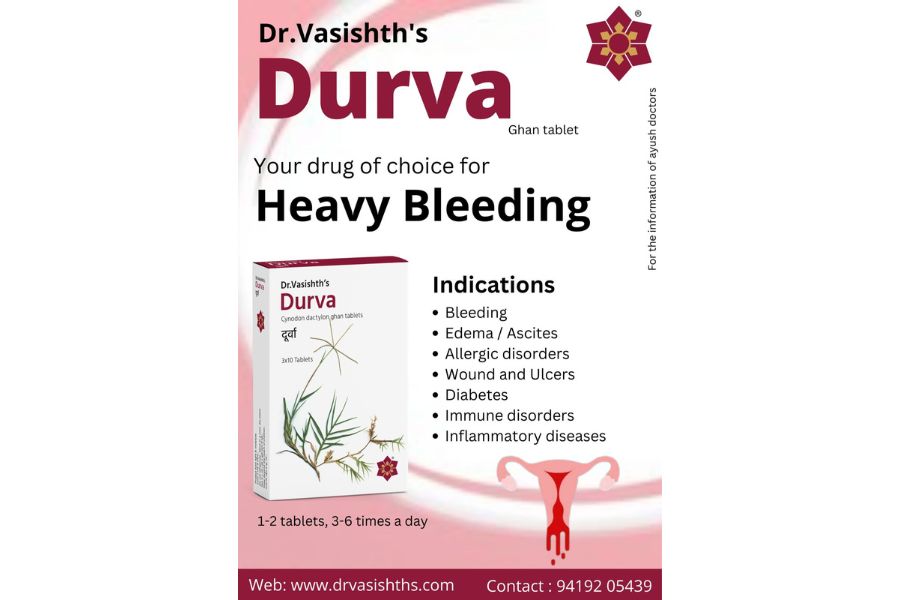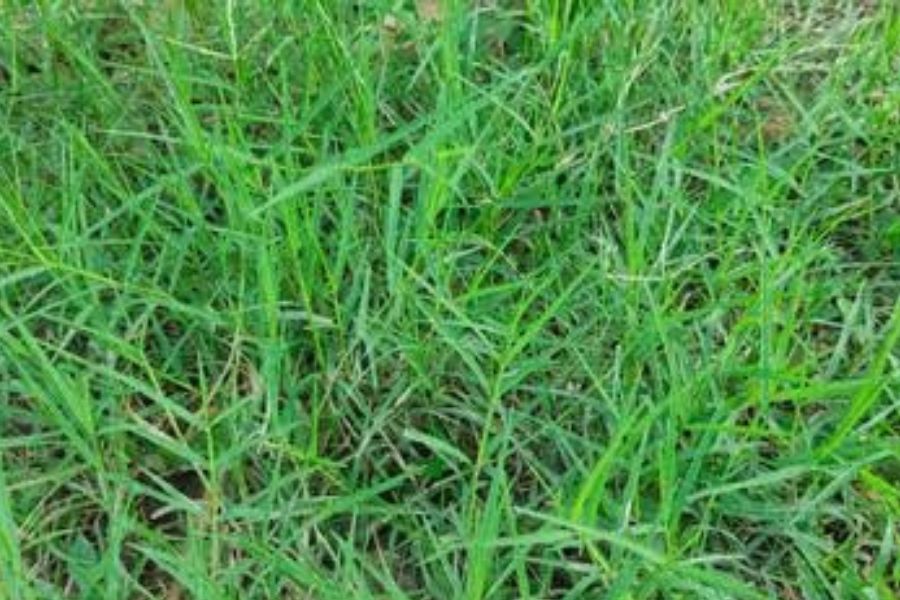Durva is a well-known, perennial grass found all over India. Its whole plant is widely used in bleeding and bleeding disorders. It contains Flavonoids, Alkaloids, Glycosides, Terpenoids, Terpenoid steroids, Saponins, Tannins, Resins, and Phytosterols.
ACTIONS & USES:
Durva has the following major pharmacological actions and therapeutic uses –

- Bleeding: Durva has been described in ayurveda as a potent drug that promotes blood coagulation. It is thus helpful in managing bleeding and coagulation disorders, etc.
- Edema / Ascites: Durva has been reported to increase the production of urine (diuretic). It is thus useful in renal edema, ascites, hepatic edema, UTI, etc.
- Allergic disorders: Durva has been reported to prevent the release of allergic substances from the mast cells and basophils – histamine, bradykinin, 5HT, cytokines, etc. It is thus useful in the management of allergic disorders – naso-bronchial allergy, skin allergy, etc.
- Wound and Ulcers: Phenolic acids and flavonoids in Durva give it wound-healing and ulcer-healing activity. It is thus used in the management of ulcers and wounds.
- Diabetes: Flavonoids and sterols in Durva give it hypoglycemic activity. It is thus useful in diabetes mellitus, especially type-I.
- Immune disorders: Durva has been reported to possess immune-modulator activity. It is thus useful in various auto-immune disorders, like – RA, SLE, psoriasis, lichen, diabetes type-I, ankylosing spondylitis, IBD, etc.
HOW TO USE?

- Durva ghan tablet 600 mg (= 3 gm Durva whole plant powder) – Start 1-2 tablets, 3-6 times a day, depending upon the severity of the disease and the body weight of the patient. On improvement taper the dose and bring it to the minimum dose required. To be taken just after meals with plain water.
PRECAUTIONS:
Nothing specific. Largely safe for long-term use.

